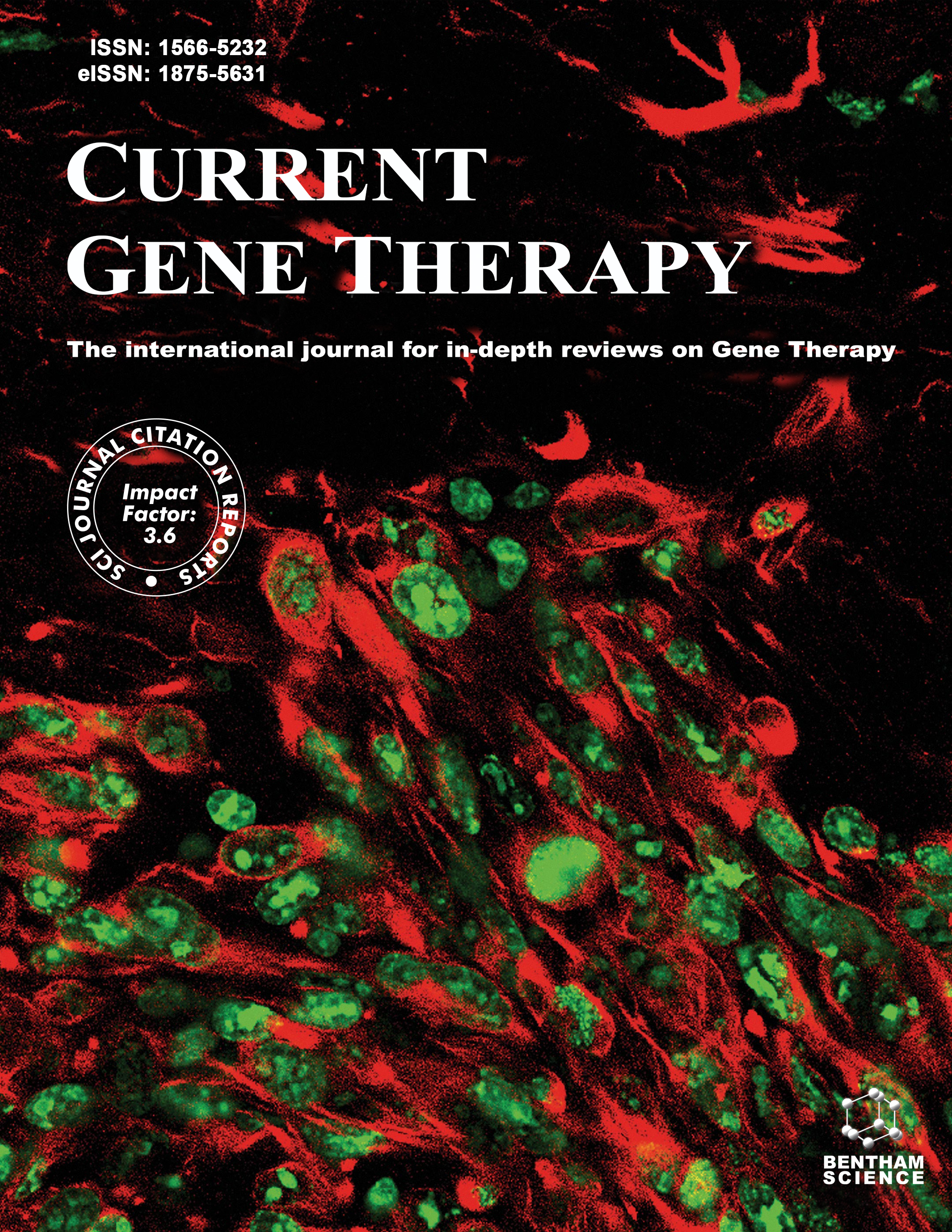- Home
- A-Z Publications
- Current Gene Therapy
- Previous Issues
- Volume 22, Issue 3, 2022
Current Gene Therapy - Volume 22, Issue 3, 2022
Volume 22, Issue 3, 2022
-
-
Reduced Immunogenicity of Intraparenchymal Delivery of Adeno-Associated Virus Serotype 2 Vectors: Brief Overview
More LessAuthors: Wuh-Liang Hwu, Shin-Ichi Muramatsu and Bruria Gidoni-Ben-ZeevPre existing immunity to adeno-associated virus (AAV) poses a concern in AAV vector– mediated gene therapy. Localized administration of low doses of carefully chosen AAV serotypes can mitigate the risk of an immune response. This article will illustrate the low risk of immune response to AAV serotype 2 vector–mediated gene therapy to the brain with support from clinical trial data in aromatic L-amino acid decarboxylase Read More
-
-
-
Clinical Development of Cell Therapies to Halt Lysosomal Storage Diseases: Results and Lessons Learned
More LessAlthough cross-correction was discovered more than 50 years ago, and held the promise of drastically improving disease management, still no cure exists for lysosomal storage diseases (LSDs). Cell therapies have the potential to halt disease progression: either a subset of autologous cells can be ex vivo/ in vivo transfected with the functional gene or allogenic wild type stem cells can be transplanted. However, the majority of cell-b Read More
-
-
-
Gene Therapy for Critical Limb Ischemia: Per Aspera ad Astra
More LessAuthors: Vyacheslav Z. Tarantul and Alexander V. GavrilenkoPeripheral artery diseases remain a serious public health problem. Although there are many traditional methods for their treatment using conservative therapeutic techniques and surgery, gene therapy is an alternative and potentially more effective treatment option especially for “no-option” patients. This review treats the results of many years of research and application of gene therapy as an example of treatment o Read More
-
-
-
Recent Advances in Predicting Protein-lncRNA Interactions Using Machine Learning Methods
More LessAuthors: Han Yu, Zi-Ang Shen, Yuan-Ke Zhou and Pu-Feng DuLong non-coding RNAs (LncRNAs) are a type of RNA with little or no protein-coding ability. Their length is more than 200 nucleotides. A large number of studies have indicated that lncRNAs play a significant role in various biological processes, including chromatin organizations, epigenetic programmings, transcriptional regulations, post-transcriptional processing, and circadian mechanism at the cellular level. Since lncRNAs Read More
-
-
-
Therapeutic Approaches for the Management of Autoimmune Disorders via Gene Therapy: Prospects, Challenges and Opportunities
More LessBackground: Autoimmune diseases are the diseases that result due to the overactive immune response, and comprehend systemic autoimmune diseases like Rheumatoid Arthritis (RA), Sjgren’s Syndrome (SS), and organ-specific autoimmune diseases like type-1 diabetes mellitus (T1DM), Myasthenia Gravis (MG), and Inflammatory Bowel Disease (IBD). Currently, there is no long-term cure; but, several treatments exist whic Read More
-
-
-
Treatment of GM2 Gangliosidosis in Adult Sandhoff Mice Using an Intravenous Self-Complementary Hexosaminidase Vector
More LessBackground: GM2 gangliosidosis is a neurodegenerative, lysosomal storage disease caused by the deficiency of β-hexosaminidase A enzyme (Hex A), an α/β-subunit heterodimer. A novel variant of the human hexosaminidase α-subunit, coded by HEX M, has previously been shown to form a stable homodimer, Hex M, that hydrolyzes GM2 gangliosides (GM2) in vivo. Materials & Methods: The current study assessed the efficacy Read More
-
-
-
Computational Analysis Illustrates the Mechanism of Qingfei Paidu Decoction in Blocking the Transition of COVID-19 Patients from Mild to Severe Stage
More LessAuthors: Xianhai Li, Liu Xiang, Yue Lin, Qiang Tang, Fanbo Meng and Wei ChenBackground: The epidemic of SARS-CoV-2 has made COVID-19 a serious threat to human health around the world. The severe infections of SARS-CoV-2 are usually accompanied by higher mortality. Although the Qingfei Paidu Decoction (QFPDD) has been proved to be effective in blocking the transition of COVID-19 patients from mild to severe stage, its mechanism remains unclear. Objective: This study aims to explore the me Read More
-
Volumes & issues
-
Volume 25 (2025)
-
Volume 24 (2024)
-
Volume 23 (2023)
-
Volume 22 (2022)
-
Volume 21 (2021)
-
Volume 20 (2020)
-
Volume 19 (2019)
-
Volume 18 (2018)
-
Volume 17 (2017)
-
Volume 16 (2016)
-
Volume 15 (2015)
-
Volume 14 (2014)
-
Volume 13 (2013)
-
Volume 12 (2012)
-
Volume 11 (2011)
-
Volume 10 (2010)
-
Volume 9 (2009)
-
Volume 8 (2008)
-
Volume 7 (2007)
-
Volume 6 (2006)
-
Volume 5 (2005)
-
Volume 4 (2004)
-
Volume 3 (2003)
-
Volume 2 (2002)
-
Volume 1 (2001)
Most Read This Month
Article
content/journals/cgt
Journal
10
5
false
en

Most Cited Most Cited RSS feed
-
-
New Hope for Intervertebral Disc Degeneration: Bone Marrow Mesenchymal Stem Cells and Exosomes Derived from Bone Marrow Mesenchymal Stem Cell Transplantation
Authors: Xiao-bo Zhang, Xiang-yi Chen, Jin Qi, Hai-yu Zhou, Xiao-bing Zhao, Yi-cun Hu, Rui-hao Zhang, De-chen Yu, Xi-dan Gao, Ke-ping Wang and Lin Ma
-
- More Less

